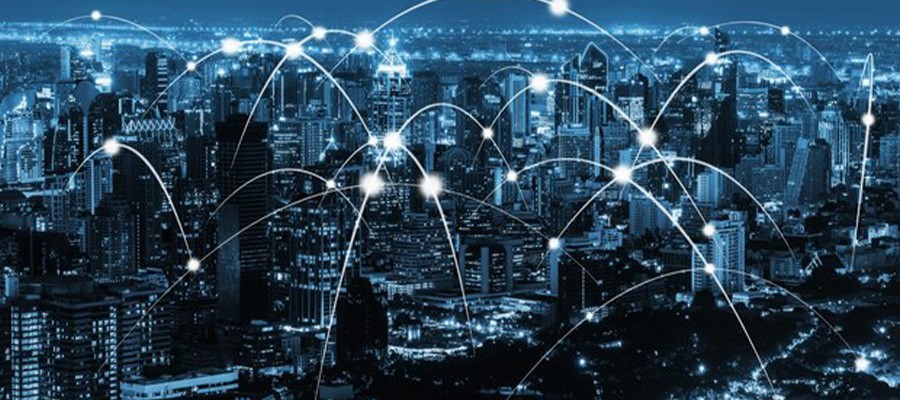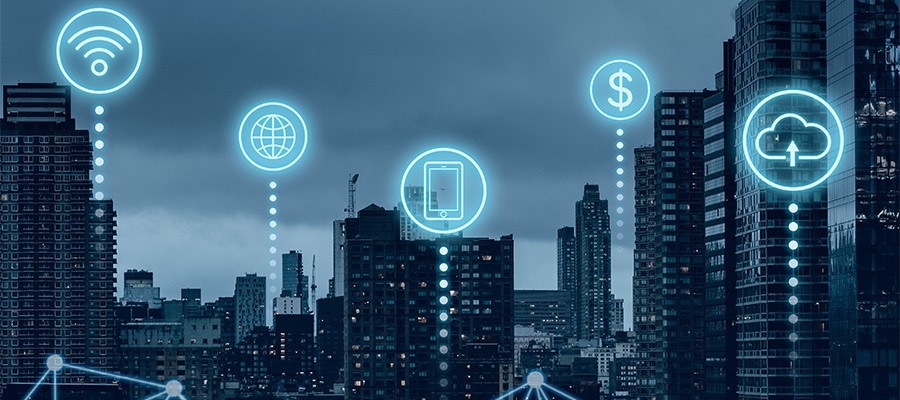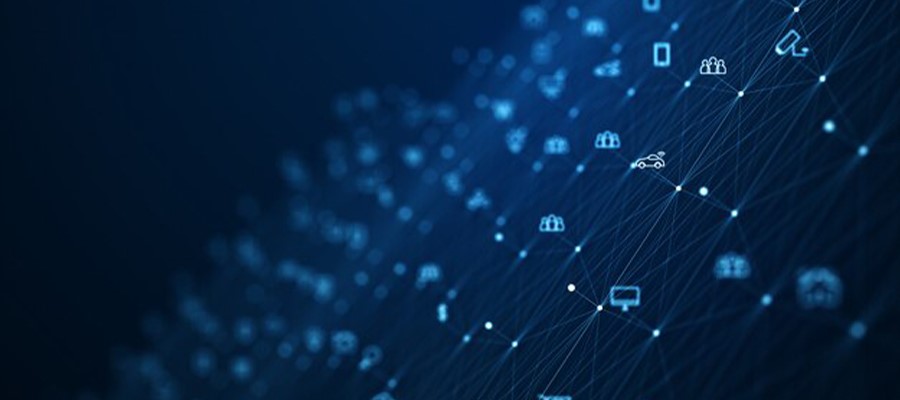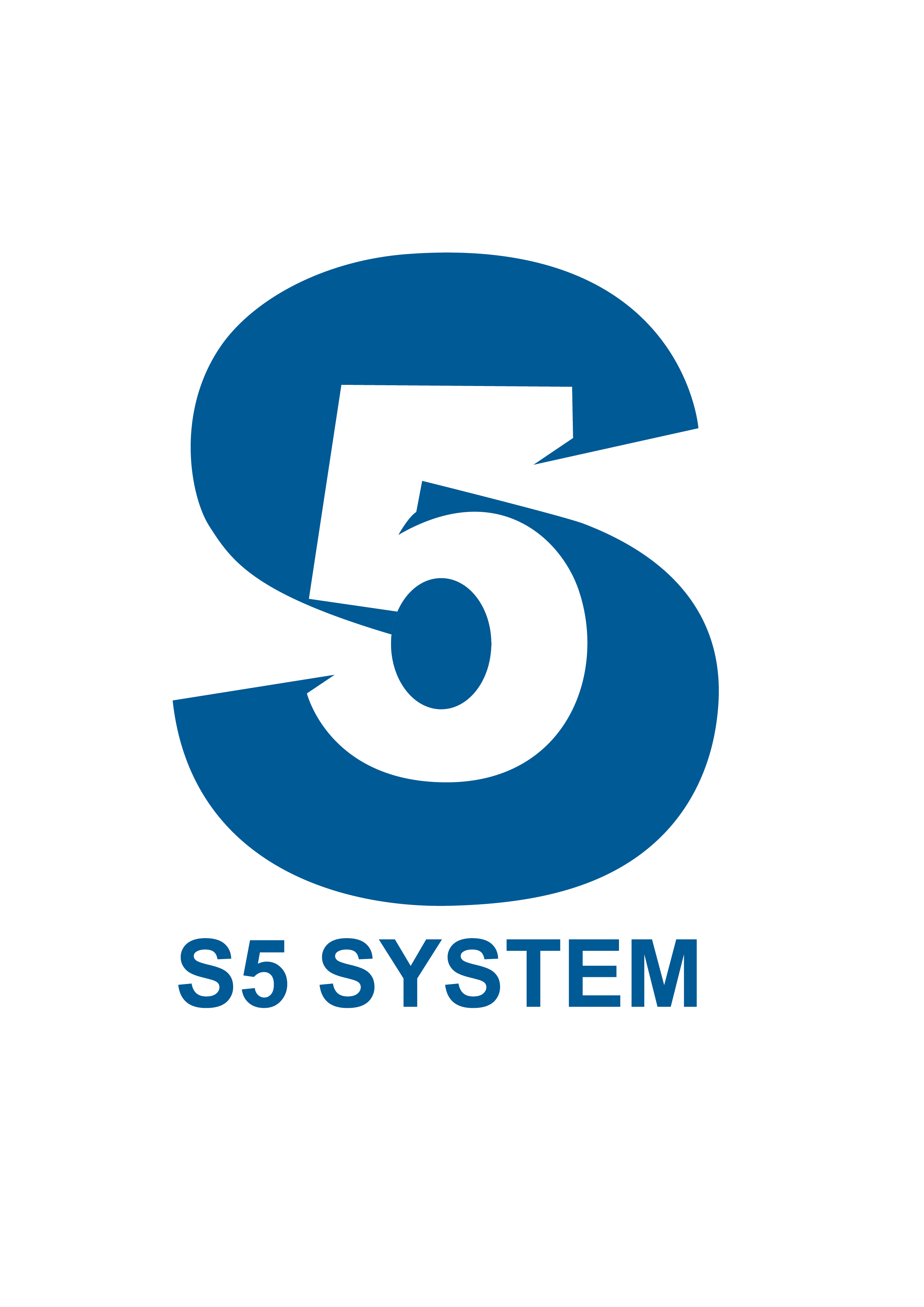Internet of things – everything you should know about this cutting-edge technology
Miniaturization is still progressing, and thanks to it, our phones do not look like bricks anymore, and writing this article, I do not need a few separate rooms for my computer.
Because of the continual downscaling of Hardware components like computer chips, new and more innovative methods for their use are emerging. Let’s add to this the fact that wireless Internet is available to more than half of the world’s population and we get the answer to why the internet of things conquered the world so quickly.
It is anticipated that there are presently over 10 billion active IoT devices in use. So, what exactly is an IoT?
What is the Internet of things?
The Internet of Things is a way to connect the physical world with the digital world. Internet of Things includes all physical devices connected to the Internet, collecting and sharing data further. Hence, this technology is called the Internet of Things.
With the current level of technological development, more and more devices have the prefix “smart,” and in most cases, this is what IoT refers to. To illustrate it better, let’s take an example from everyday life. I have a smart oven at home that can connect to the Internet and show me dinner recipes.
This is the use of IoT in everyday objects that would be just “dumb” equipment without this technology. It is consumer use, but IoT also improves business processes. More about it later in the article. The most important thing is to understand that IoT is a technology that covers the entire spectrum of solutions.
From smart pills equipped with sensors, our smartphones to large production lines stuffed with sensors and connected to the Internet. Now let’s look at how IoT started in the first place.

A brief history of IoT
It may seem that the Internet of Things is a concept invented in the 21st century, but people tried to create “smart” devices already in the 1980s. Unfortunately, the technology was not yet advanced enough to allow such solutions. The chips were too big, and the Internet was just starting to gain momentum.
The term Internet of Things was first used in 1985 by Peter T. Lewis. He described this technology as follows: “The Internet of Things, or IoT, is the integration of people, processes, and technology with connectable devices and sensors to enable remote monitoring, status, manipulation, and evaluation of trends of such devices.” In fact, it can be said that the meaning of this statement has survived to this day, and this is what IoT is all about.
The first IoT device to be considered was a modified Coca-Cola vending machine, which could communicate whether the new drinks were cold or not. Those were such ancient times that this machine was not connected to the Internet as we know it today, but to ARPANET – the predecessor of the Internet that we use today.
It’s hard to tell precisely when the Internet of Things really appeared in our lives, but it is estimated that it was around 2008 when the number of connected devices exceeded the number of people on earth. For every person, there were 1.81 devices connected to the Internet.
How does the Internet of things work?
We already know what IoT is and that humanity has long been working on introducing this type of technology. Now let’s look at how the Internet of Things works.
All IoT devices are connected to the Internet; they have their IP address and constantly collect data. However, for this data to be useful, it must first be sent to the IoT platform, which collects data from all connected devices. Only when the data is on the IoT platform, it is analyzed, and the user can extract the information he needs.
My example with the oven illustrates this perfectly. Thanks to IoT sensors, I know what the temperature in the oven is, and how much time is left to heat up, because data from many other connected devices is already on the IoT platform. All this data is then displayed in the application so that human intervention is minimized – I do not have to stand and watch when the oven heats up.
Sending IoT data to IoT platforms in the cloud works well if we can accept a slight delay; in the end, the data must be analyzed and returned to the consumer IoT devices from which it came out. In the case of industrial systems, it is not so easy because essential systems, such as smoke detectors, for example, must react to the threat as quickly as possible.
However, it may take too long to process the data in the cloud. Therefore, industrial IoT is often based on edge devices that can acquire data themselves, process it, and perform appropriate actions, thanks to which the delay is reduced.
Please take a look at our infographic to understand better how IoT works.
Is IoT the future?
Yes definitely. The IoT market keeps developing and is expected to reach a value of 1,386.06 billion USD by 2026 from 761.4 billion USD in 2020.
Most of the devices we use daily can be described as IoT smart objects. It just shows how fast this market is growing. And this trend is only accelerating.
Refrigerators have built-in screens and can show the content without opening the door, and cars on the speedometer display various useful data for the driver.
It is estimated that by 2025 there will be over 27 million IoT connections. Therefore, investing in IoT is an excellent move.

The future of IoT
Data security
When it comes to the future of the technology itself, data security is the most important aspect that companies using this technology are working on. In 2020, Internet-connected devices generated over 4 trillion gigabytes, which is understandable as these devices transmit data all the time.
Nobody wants his data to fall into the wrong hands, but as you know, everything connected to the Internet can be hacked. We would not like someone to steal our personal data – watch us through cameras or see the data from our smartwatch and know about our health. Therefore, security is the main aspect that companies will be improving in IoT device management.
Machine learning and Artificial Intelligence
Another aspect related to the future of IoT will undoubtedly be machine learning and AI. Trillions of gigabytes of data are far too much for a human being, but artificial intelligence can handle such a large amount of data.
Some of the data sent may be false; therefore, all collected IoT data must pass through the analysis before being returned to the user. The development of AI and machine learning will certainly have a large impact on the future of IoT because it will make data processing faster and better.
Standards
A final aspect related to the future of IoT is compatible standards. To create networks of interconnected IoT devices, one device must be able to communicate with other IoT devices in one language.
Perhaps in the future, when driving a car, we will see on the speedometer whether the light will soon turn red because the signalization will be able to communicate with the car through the same standard. If all devices communicate in one language, it can create solutions that we cannot even think about at the moment.
Examples of IoT use in everyday life
Smart Home
IoT focuses mainly on improving and making our lives easier. Therefore, a lot of IoT gadgets are meant for home use. The most popular are smart speakers such as Alexa or Amazon Echo, but the list of smart home devices that are part of the IoT ecosystem of Smart Home can be very long.
From smart thermostats that can set the temperature depending on your well-being, home security systems, such as cameras that you can access from your phone to small things like light bulbs. IoT is everywhere, and if you wanted to, you could probably replace a large part of your electronic devices with Internet-connected ones.
Smart Cities
Even cities are starting to use the Internet of Things to their advantage. In San Francisco, for example, a pilot project called the Smart Traffic Signals Pilot will examine the use of Multimodal Intelligent Traffic Signal Systems, Dedicated Short Range Communication, Transit Signal Priority, and Emergency Vehicle Preemption tools to improve safety by reducing incidents and increasing emergency vehicle response times.
In Poland – Warsaw, there is even a special car with a camera that reads the license plates and checks if someone has paid for the parking spot, if not, it immediately issues a ticket. It is an excellent example of using IoT in public spaces.

Examples of IoT use in different industries
IoT in the Healthcare industry
Healthcare is one of the industries that most often use the IoT. From wearable devices that will call an ambulance in the event of a heart attack to entire hospital equipment that can monitor the patient’s health and provide information about his poor condition in the form of a notification on the doctor’s phone.
And that’s precisely what we did for Norwegian healthcare! We developed a mobile app whose main goal was to use scales, blood pressure meters, and pulse oximeters to monitor the patient’s health remotely. It is possible due to the sensors located in these three devices from which the mobile application downloads data via Bluetooth.
Afterward, collected data, charts, and patients’ health information are sent to the doctor, who can adequately manage the treatment by accessing the data.
IoT in the AgriTech industry
The AgriTech industry faces such challenges as climate change, population growth, carbon footprint, damaged crops, and sick animals. That’s why more and more Agritech companies are starting to use automated farming techniques. One of our Agritech clients decided to reach out for help in the form of IoT system development.
As a result, we’ve created an IoT system that reduces agricultural production costs by aggregating sensor data that allow for effective farm management and fast response to changes.
Our IoT system uses sensors located throughout the farm that collect data, from farmlands to systems for watering farm animals or silos. Diversified data, incl. The temperature and amount of milk are presented in an interactive form in the mobile application installed on a connected device, where the user not only monitors the condition of the farm but also at any time can use the sliders to set, for example, the appropriate amount of field irrigation.
IoT in Enterprises
Enterprise IoT serves many businesses worldwide to automate their processes and reduce human participation in routine tasks. Enterprise IoT serves many Enterprises worldwide to automate their processes and reduce human involvement in everyday tasks.
The most important aspect is that by using IoT on a large scale, enterprises have access to a large amount of data, which, thanks to the advances in the field of Big Data analytics and processing, provides important information for people managing companies. Thanks to IoT, you can significantly increase the efficiency of production lines and people because the obtained data shows where there is room for improvement.
Benefits of IoT
The most significant advantage of IoT for consumers is that this type of technology significantly simplifies and improves life. When it comes to using IoT in business, the list of the benefits is presented as follows.
Cost-effective operation
Sensors that monitor industrial devices update data on new deliveries on an ongoing basis, or provide information about how the products perform, are the basis of IoT systems in many businesses. Thanks to the collected data, businesses can improve their products much faster, better control production lines, and minimize downtime, because the sensors will show exactly where the fault occurred. Using IoT, companies can save money because IoT-based systems perform all the mundane and fragile work.
Improved customer service
If your products use IoT, they also collect user data. Nowadays, people like to be distinguished and appreciated, and the collected data will allow you to determine what a given user needs. In addition, you will better understand your users’ behavior and preferences, which can translate into increased user engagement and loyalty to your company.
Better use of resources
As we previously stated, IoT technology can cut the use of resources particularly effective in the Agricultural sector. Integrating numerous sensors allows for more efficient resources, such as power management and water usage. Simple motion detectors, for example, may save a lot of money on electricity and water bills, allowing both small and large businesses to be more productive and environmentally friendly.
Conclusion
Internet of Things is making the concept of a connected world a reality. Connecting people with devices or machines has never been so sophisticated as it is now. We have come a long way from the first vending machine connected to ARPANET until now when more devices are connected to the Internet than people. This trend will only grow, and the Internet of Things will become more visible. According to a Kaspersky report, up to 61% of companies already use IoT to a greater or lesser extent.

